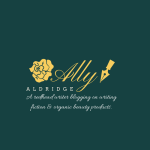
This is the last post in this series.. If you missed the previous posts they are:
Or check out the collection for all parts.
Step 3 – Publish your novel
Here is a handy info graphic of what I’m going to cover in this post.
You can save this to your Pinterest board.

Blurb
If you are self publishing you will need a blurb for your book. You can write this yourself or hire a professional.
Here’s a post about the making of the blurb for Ocean Heart.
Cover Design
Your book cover will be one of the first official marketing materials for your book. They say “Don’t judge a book by it’s cover!” Except, people do.
You can design it yourself but if you are going to do print copies, it can be tricky to get the spine right if you don’t know what you’re doing. I opted for a professional.
Look at other covers in your genre. These covers are what your ideal reader is expecting. If your cover appeals to the wrong audience it’s going to make it hard to sell.
Here’s a post about how I chose my cover designer.
Marketing
Once you have the cover, start marketing your book. Don’t wait until it’s published to start marketing.
Fun things to do, are a cover reveal to drum up interest. Here’s a post going into more detail on how I did my cover reveal including tips on creating digital bookstagram pics for promoting your book.
You can also have a preorder period so people don’t have to wait until the release date to buy and can order it right away! These purchases won’t be counted until release day, boosting your release day sales.
I learnt a lot about marketing my book from author Pagan Malcolm and did the Storyseller Academy course that covers a lot of ways to promote your book and how to change your mindset.
Another, fabulous person to check out is Michelle Raab who specialises in Marketing for Indie Creative and is the founder of World Indie Warriors.
Check the links at the end of the post for posts on my book launch. They’re useful to check out if you need some ideas.
Formatter
This is the person that makes the inside of your book pretty and accessible in different formats for different eBook readers. You can do it yourself, or use tools available online.
Here’s a post about my experience with my formatter.
If you want to do it yourself, you might find it useful to check out Brittany Wang’s YouTube video showing where to get a free template and how to edit it.
Alternatively, you can use the tools provided by your chosen distributor to turn your manuscript into a book. I believe Amazon, D2D, and Ingram Sparks offer these tools for free.
Proofread
Big mistake I made was skipping this step. I uploaded my files to Ingram and then one of my ARC readers (author Cassidy Reyne) let me know where I’d missed some typos. ?
My formatter was happy to amend my files for free but Ingram charged me for changing the files. ?
Don’t skip this step. The last pair of eyes on your book are necessary. No matter all the edits already, and how perfect you believe it is, get a proof reader to do a final quality check.
Self Edit
If your proof reader spots any issues, you will need to make the changes and inform your formatter exactly what you needs changing!
And you thought you’d finished editing. ?
Upload Files
If you are happy with everything, upload it to the distributor site you are using. Popular choices are:
- Amazon
- Ingram Spark
- Draft 2 Digital
- Lulu
- Barnes & Noble
ARC Reader
Send your ARC readers a final copy. Between now and publishing you could make changes but we’d hope that by this point it is done.
The ARC readers need enough time to read it before you publish. This enables you to gather reviews for marketing and gives readers an idea of what others thought.
ARC readers will leave an honest review. Your book cover & blurb should attract the right readers. If your ARC readers are surprised by your book (and not in a good way) you might want to change the cover or blurb to ensure you attract the correct readers.
Check out my post on Betas vs ARC readers.
Publish
That’s it! Except now your book is out there, you still need to market it. Don’t be shy – every chance you get, give it a shout out. And, on that note…
Redfae Bookshop is my Affiliate Bookshop.org Shop Link.

[kofi]
If you enjoyed this, you will like:





